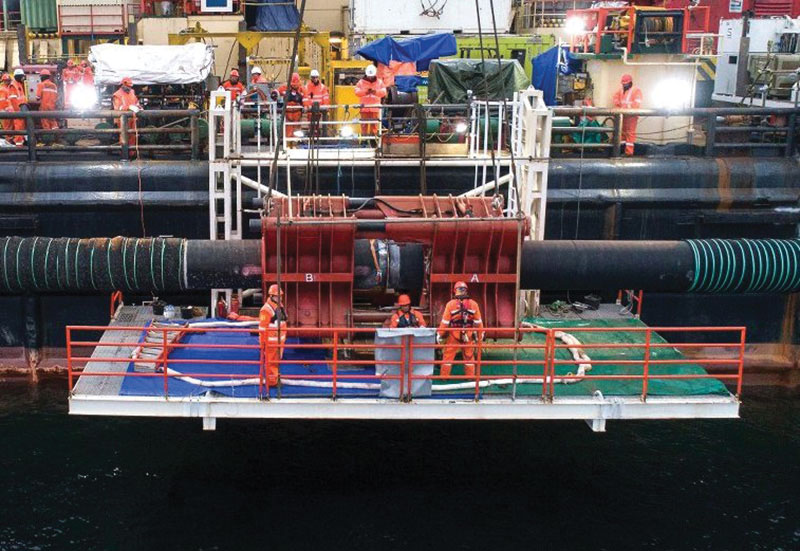December 2022, Vol. 249, No. 12
Features
Denmark’s Orsted Signs Deal for Norwegian Gas via Baltic Pipe
By Jeff Awalt, P&GJ Executive Editor
(P&GJ) — Orsted AS signed a deal for natural gas from the Norwegian North Sea to be delivered through the newly constructed Baltic Pipe, cushioning the effect of Russian cuts on Danish energy markets, the company said.
Fredericia, Denmark-based Orsted inked the deal with Norway’s Equinor ASA for the period from Jan. 1, 2023, to April 1, 2024, spanning the better part of two winters as Europe seeks to replace all Russian gas supplies with alternative sources.
The agreement calls for total gas deliveries of about 8 TWh during the 15-month period which corresponds to roughly a quarter of the expected total Danish gas consumption.
Soren Thygesen Blad, Orsted’s head of Gas Portfolio Management said the Equinor contract will ensures a stable supply of Norwegian gas as the Tyra field in the Danish sector of the North Sea isn’t supplying gas to the country.
“With this agreement, we’ll have more than enough gas to meet the gas demand of our customers for the coming and next winter, enabling us to stock up our Danish gas storage facilities over the summer,” he said.
France’s TotalEnergies is modernizing its Tyra infrastructure after 40 years of production to optimize efficiency and reduce emissions and flaring.
Denmark is more insulated from the impact of Russia’s gas cutoff than some other Western European countries due to its longtime expansion of renewable energy infrastructure. The birthplace of modern wind energy systems, nearly half of Denmark’s electricity production is powered by wind. It has also responded to the loss of Russian gas supplies by reducing government energy consumption and urging the public to follow suit.
“With this agreement and the production from the South Arne field and from biogas, Orsted has more than covered the consumption of its own customers, which are business customers in Denmark and Sweden,” Orsted said in its announcement of the Equinor deal.
“The agreement strengthens the security of supply in Denmark while also replacing the gas volumes that Orsted would otherwise need to buy on a volatile European gas market in the period when the Tyra field is not supplying gas to Denmark,” it said.
The $2 billion Baltic Pipe, which began operations in late September, was designed to deliver Norwegian natural gas to Poland as a key step toward energy independence from Russia. It involved construction of a new 68-mile (110-km) subsea pipeline that ties in to the Europipe II, which carries North Sea gas to Germany, and connects it to the Danish transmission grid.
Denmark was viewed as merely a transit route for Baltic Pipe, flowing gas through a new 143-mile (230-km) pipeline from Blabjerg on the West Coast to a new compressor station on the southeastern island of Zealand, which faces the Baltic Sea. From there, a new subsea pipeline across the Baltic connects the system to Poland.
The Baltic Pipe was expected to flow at a rate of about 71 to 106 Bcf/a (2 to 3 Bcm/a) during its startup phase before increasing to 10 Bcm/d, according to Poland‘s deputy infrastructure minister, Marek Grobarczyk.
The Baltic Pipe combined with expanded LNG import and regasification terminals have enough capacity to give “100% energy security” for Poland. Today’s announced Orsted-Equinor agreement will extends that energy security to Denmark.






Comments